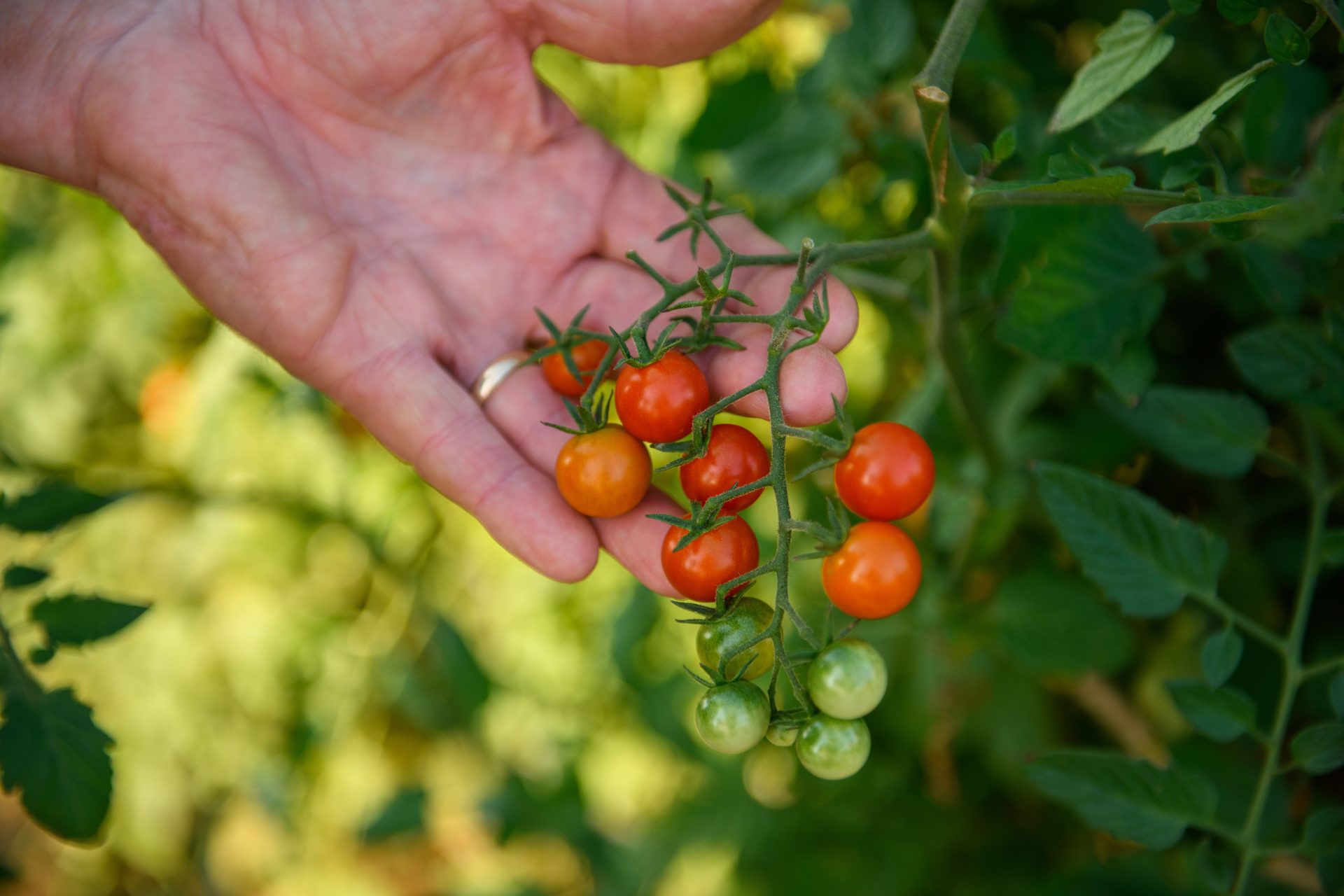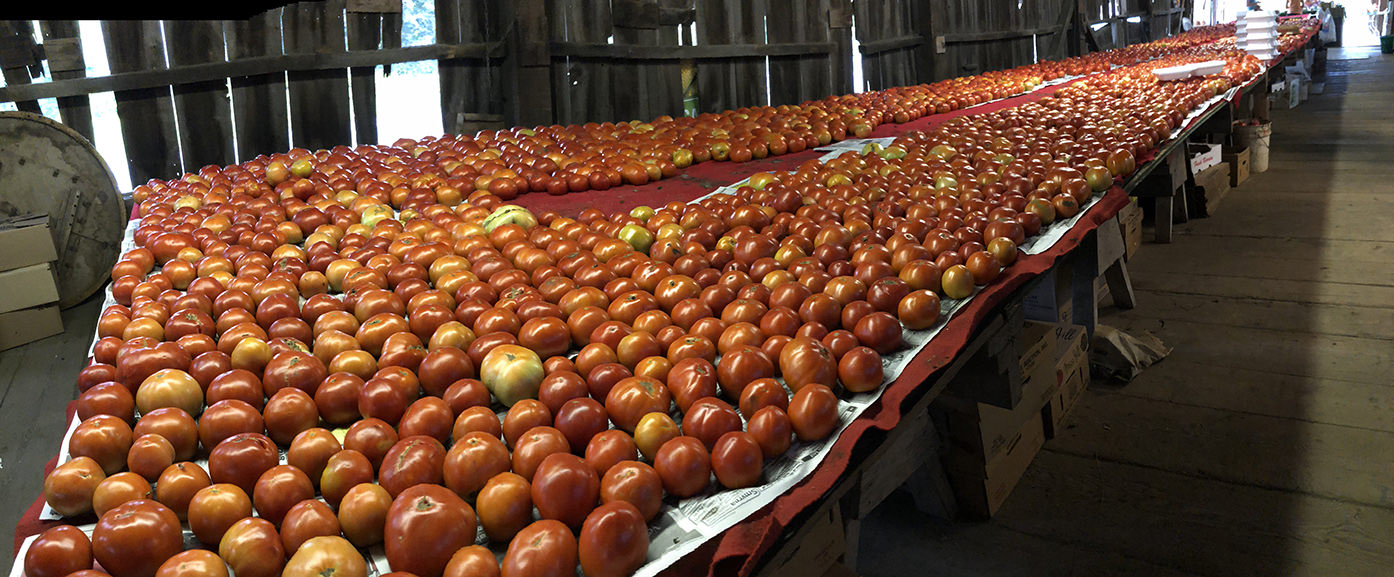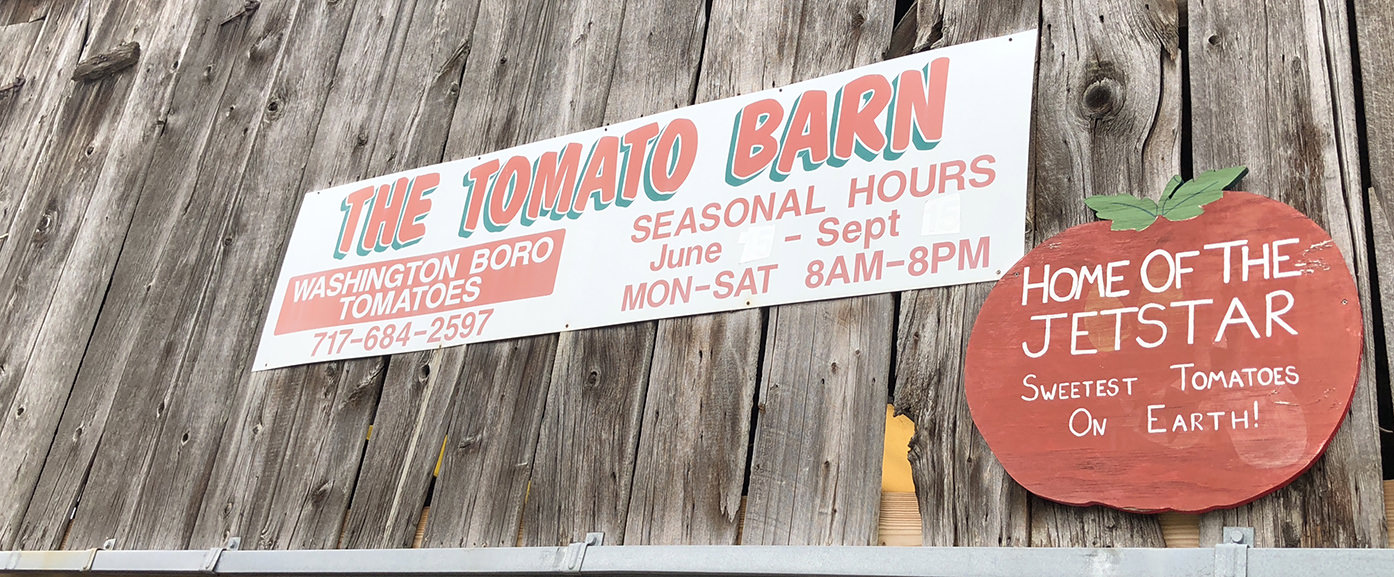
Written by Art Petrosemolo
At this time of year, a day doesn’t go by that I am not finding a way to put a tomato on something. It’s either my ham and cheese sandwich, in a salad or maybe grilled with my chicken or steak.
We live in a state that ranks 13th overall in tomato production. And Lancaster County is the state’s largest producer of tomatoes. Many of us, with small vegetable gardens, are growing tomatoes and farm stands abound on the back roads of the county, all selling home-grown tomatoes. You’re in deep trouble if you live here and don’t like tomatoes.

Well, I have literally stepped into the tomato controversy—tomatoes that look good or taste good—by accident and am finishing up a story for next week’s edition of Lancaster Farming on just that subject.
How did I get into this one? Well last week, my wife and I—along with Bob and Bernie Collins—visited the Tomato Barn in Washington Boro, close to the Susquehanna River. It is about 20 miles—but a 40 minute drive—mostly off the beaten path from Route 30. I heard about it from a PBS television show on Pennsylvania Barns and had to visit.
It is run by third generation tomato farmers Jen and Tyler Rohrer who took over the operation from Jen’s dad Steven Funk about five years ago.
What fascinated me and got me interested in making the trip was that—on the PBS program—they raved about the taste of the Washington Boro tomato and that the heirloom varieties no longer grown commercially were available there and although they did not look great, the taste was terrific.
So I visited.
What I learned got me started on some heavy research on tomatoes here in Lancaster County and across the nation and why tomatoes can look great but can lack in taste and what’s being done about it.
First, in the early to mid-20th century, Washington Boro, with the right limestone soil, weather and proximity to the Susquehanna River, turned out to be ideal for growing tomatoes with a wonderful, juicy texture and sweet taste. One of the varieties of choice was a Jet Star.
The problem, according to Tyler Rohrer who manages the operation now, is that the tomatoes did not always look like what, now, we have been accustomed to in the supermarket. Also, they were soft when fully ripe and did not travel well so they could not be used in produce auctions or sold wholesale where they would have to travel any great distance.
So, I am shaking my head, when I tell you that the agriculture wizards in the US developed a tomato that was large, had firm skin, looked beautiful, traveled well, stayed fresh for days or weeks and it became what everyone grew. Unfortunately, what they bred out of the tomato was taste.
I learned several years ago when I did a story on a produce wholesaler and spent time at the large wholesale market in Philadelphia, for the past several decades we have become accustomed to strawberries, raspberries, blueberries, corn-on-the-cob and other vegetables 12 months a year. So, vegetables are grown worldwide and air shipped to US markets. The fruits are all bred to look good and travel well. Unfortunately, taste is secondary.
So back to the tomato. In Washington Boro mid-20th century, there were more than 125,000 tomato plants in the ground (each plant can produce at least 15 pounds of tomatoes). And tomatoes were and still are, a very labor intensive business. With the changeover to the commercial tomato that can be wholesaled and travel great distances, the number of plants in Washington Boro has dwindled to just over 10,000 as the heirloom varieties are soft when ripe and that is not a desirable characteristic for the US consumer.
The Tomato Barn is the place to still try and purchase heirloom, tasty, tomatoes like the Jet Star as well as a variety of products (juice, sauce, salsa) made from this tasty fruit.
And with the continued growth and use of high tunnel technology, now most of the heirloom varieties look good as well as taste good although they remain soft to the touch when ripe.
In recent years, the horticultural science academic community has been working to come up with a genetic fix to bring the taste back to the tomato. Let’s hope they succeed.
So is the Tomato Barn the only place to get a tasty tomato? No, you can drive right over the border to New Jersey for a famous Jersey tomato. Because New Jersey became so populated quickly, it never had space for commercial tomato farms and its small, family owned farms continued to cultivate “tasty” tomatoes including the Ramapo Tomato developed by Rutgers (the State University), which is suitable to east coast soil and weather. Although not popular commercially, it is one of the varieties that has survived and flourished in the state and helped give it the reputation of growing some of the tastiest tomatoes around.
